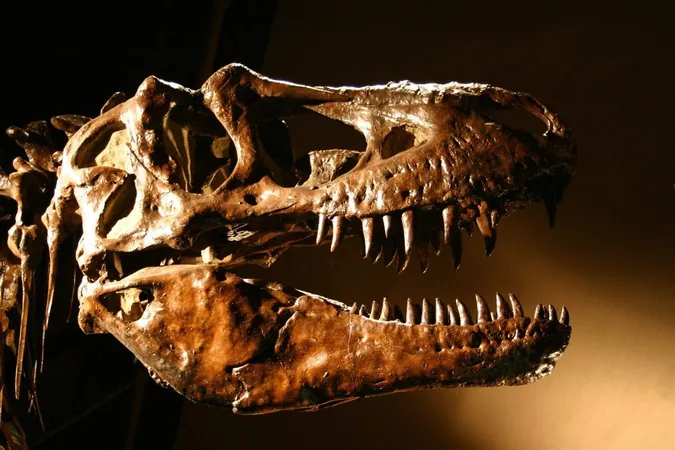
Unveiling the Secrets of Dinosaur Bite Strength: What Researchers Discovered About 18 Prehistoric Predators
2025-08-06
Author: Wei Ling
Diverse Hunting Strategies Among Dinosaurs
In a groundbreaking study published in Current Biology, scientists have revealed that not all giant carnivorous dinosaurs were cut from the same cloth when it came to hunting. While the infamous Tyrannosaurus rex evolved a skull perfectly designed for bone-crushing power, other massive predators like Allosaurus and Giganotosaurus adopted weaker, yet more specialized biting techniques for tearing flesh.
Cutting-Edge Research Methods
Driven by a quest to understand how prehistoric predators interacted with their prey, researchers from the University of Bristol utilized advanced 3D technologies—including CT and surface scans—to analyze the biomechanics of 18 different species of bipedal carnivorous dinosaurs. Their goal? To uncover the intricate relationship between skull structure and feeding behavior.
Multiple Paths to Predatory Success
"Tyrannosaurs evolved skulls built for strength and crushing bites, while other lineages had comparatively weaker but more specialized skulls," explained co-author Andrew Rowe. The findings challenge the notion of a single optimal skull design for predatory giants, showing that multiple designs effectively catered to different hunting styles.
Skull Stress and Feeding Mechanics
Interestingly, despite many of these dinosaurs achieving similar sizes, their skull structures exhibited significant biomechanical variations. T. rex could unleash incredibly strong bites, but this came with increased stress on its skull. Meanwhile, Giganotosaurus utilized lighter bites, hinting at differing hunting strategies.
Comparing Hunts: T. Rex vs. Allosaurus
Some less ferocious dinosaurs, such as Allosaurus, may have hunted similarly to modern-day Komodo dragons, employing slashing movements to disable their prey. In stark contrast, T. rex operated more like a crocodile—delivering crushing bites capable of shattering bones.
Size Isn't Everything: The Complexity of Bite Force
The research also revealed an intriguing twist: bite strength does not necessarily correlate with size. Smaller theropods sometimes generated greater skull stress due to increased muscle volume and bite force, suggesting that these species occupied different ecological niches, thereby minimizing competition and fostering specialization.
Evolving Diversity for Survival
These remarkable discoveries shine a light on the diverse adaptations that enabled these long-extinct creatures to thrive in ancient ecosystems. It's not merely about size; it's about how they evolved distinctive hunting and feeding methods that helped them survive in a world full of competition.
A Glimpse into Prehistoric Life
As we uncover more about these prehistoric titans, we see a tapestry of evolutionary innovation that made each species unique. This research not only enhances our understanding of dinosaur biology but also enriches our appreciation for the complexity of life that once roamed our planet.



 Brasil (PT)
Brasil (PT)
 Canada (EN)
Canada (EN)
 Chile (ES)
Chile (ES)
 Česko (CS)
Česko (CS)
 대한민국 (KO)
대한민국 (KO)
 España (ES)
España (ES)
 France (FR)
France (FR)
 Hong Kong (EN)
Hong Kong (EN)
 Italia (IT)
Italia (IT)
 日本 (JA)
日本 (JA)
 Magyarország (HU)
Magyarország (HU)
 Norge (NO)
Norge (NO)
 Polska (PL)
Polska (PL)
 Schweiz (DE)
Schweiz (DE)
 Singapore (EN)
Singapore (EN)
 Sverige (SV)
Sverige (SV)
 Suomi (FI)
Suomi (FI)
 Türkiye (TR)
Türkiye (TR)
 الإمارات العربية المتحدة (AR)
الإمارات العربية المتحدة (AR)